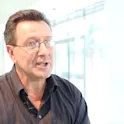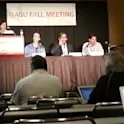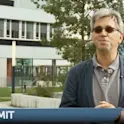
Climate action
05 Apr 2016
Networked solutions needed for climate change adaptation
By Michelle Ponto, Science Writer The 2015 Paris Climate Conference (COP21) led to a shift in focus in climate change research towards finding solutions. The hope is that these solutions will prepare society to adapt and mitigate the consequences of a warming planet, but the research shift to finding solutions is not easy. “An important aspect that has made climate change difficult is that energy is an intrinsic component of our lives and our activities – from food production systems to transit systems, to adaptation systems,” said Carlos M. Duarte, Field Chief Editor of Frontiers in Marine Science and Tarek Ahmed Juffali Research Chair in Red Sea Ecology at King Abdullah University of Science and Technology. Because energy affects so many aspects of our lives, Duarte says it’s difficult to address the issues on how to build systems that are both efficient and don’t contribute to the problem of climate change without encompassing a whole array of disciplines. An example he gives is LED technology. While these lights are saving cities money and use less energy, they create light pollution that is drastically greater than traditional light bulbs. According to research, this could disrupt the behavior patterns of nocturnal animals, the […]

